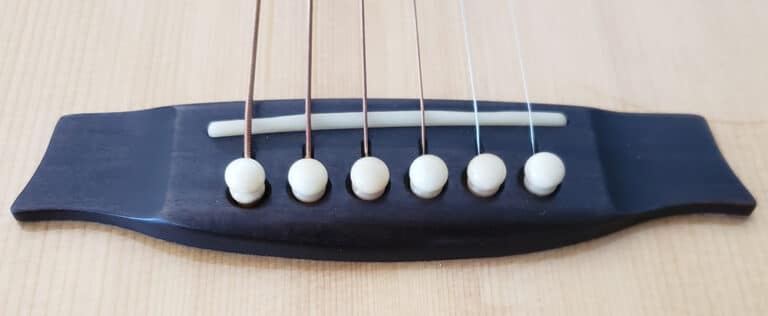Acoustic Guitar Action 'as Low as Possible without Buzzing'

Often when players state that they want the action as low as possible without buzzing, they wish to improve playability, but they are not aware of other ways to do this. However, there are other factors that affect playability, and we suggest that you consider those aspects first before lowering saddle height. Try the following.
Smooth Nut Slots
The inside of your nut slots may be a bit rough, resulting in poor string movement at the nut. If so, then smoothing the nut slots might improve playability, yet kept the action/neck relief intact. Please see our article on Tips to Customize Acoustic Guitars for steps.
Saddle and Fretboard Radius Match
For steel-string guitars, your guitar’s fretboard almost certainly has a subtle radius. Typically matching the fretboard and saddle radius produces better playability. If your saddle has a different radius from your fretboard’s, this might be part of your playability problem. Please see Step Three in our article on How to Find an Acoustic Guitar Saddle Replacement for further information.
Bass/Treble Edge Height Difference
Saddles typically have a bass to treble E height difference of about 1 mm. However, every guitar is different and so, even during the factory set up, the saddle height difference may have been adjusted. If a new saddle was put on that has a different bass/treble edge height difference from your previous saddle’s, this might cause playability issues. Please see our article on How to Adjust Saddle Height on One Side More than the Other for advice.
Neck Relief Adjustment
Your guitar’s neck will have a subtle bow to it, and your guitar likely has a truss rod to allow for adjustments. Climactic changes can decrease or increase your neck relief, affecting playability up and down the neck, as well as affect your action height. Please see Acoustic Guitar’s Adjusting Neck Relief for details.
Ease Up on the Gas Pedal
Guitar buzz is relative to your picking hand attack. You may be striking harder than is necessary, producing a buzz. Consider easing off the gas pedal. Read our article on How High Should the Action Be on an Acoustic Guitar to determine appropriate twelfth fret action heights for your playing style.
If You Still Want to Lower Your Saddle Height
If you still wish to lower your action as low as possible without buzzing, then follow the below steps.
Step One – Check Break Angle
First, check your break angle at the saddle to see whether a saddle height reduction is even possible. If the saddle gets too low and you have insufficient break angle, then you will encounter other buzz and tonal issues. Please see the following link for more details: String Break Angle
Step Two – Estimate Saddle Height Changes and Adjust
Once you have determined your goal twelfth fret action, you can estimate the saddle height changes needed. First, measure your current twelfth fret action height for the bass and treble E. Second, remove your saddle, and measure the height from the bottom of the saddle to where the strings rest at the bass E and treble E strings. You need to remove twice as much height from your saddle to obtain your reduction height goal for twelfth fret action. For example, if your bass E twelfth fret action is 7/64” and you want to lower it by 1/64” to a 3/32” action height, then you would need to remove 1/32” material from the bass E side of your saddle. However, we suggest that you remove a touch less than 1/32”, check your saddle’s action height and playability, then reduce height as needed.
Keep in mind that playability is more important than achieving specific numbers. For instance, in the current example, if your twelfth fret action was still a bit above 3/32”, but you were happy with the tone and playability, then there is no need to lower the saddle further. In fact, there are good reasons not to lower it further, including good tone, better break angle, and not getting the saddle so low to the point of buzzing, in which case you will need to cut another saddle.
If you lower your saddle height as much as possible and are still not happy with your guitar’s playability, then we suggest taking your guitar to a professional guitar tech.
Next Up: Odd Buzz? Tighten Your Tuning Machines
* Please see page 40 of Dan Erlewine’s Guitar Player Repair Guide for more information.
